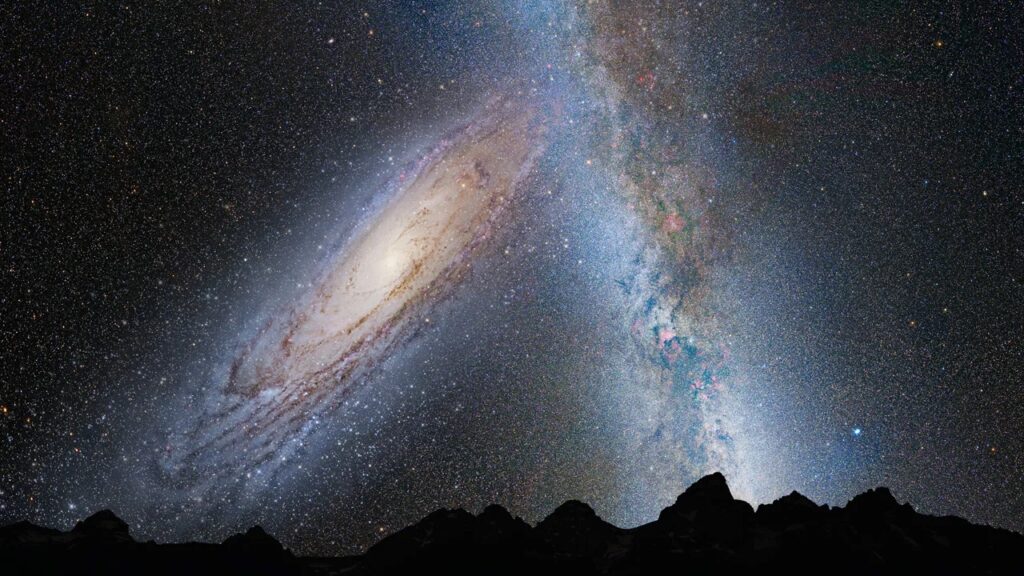The Andromeda Nebula (M31) is the largest member of the Local Group and the closest spiral galaxy to us. Spectral studies show that its powerful gravity attracts the Milky Way. Now the two star systems are converging at a slowly increasing speed of 85 km/s, and in a few billion years they will merge into one grand elliptical galaxy. However, an analysis of data from the European Gaia astrometric telescope has shown that the first stage of this merger has already begun: the systems are actively exchanging stars.
The vast majority of stars in the Milky Way orbit its centre in more or less elongated elliptical orbits. The Sun makes one revolution around it in about 220 million years, moving at an average speed of 250 km/s. But even such a high speed does not allow it to overcome the powerful aggregate gravity of our star system and fly out of it.

In 2005, researchers at the Harvard-Smithsonian Center for Astrophysics discovered an unusual object travelling almost directly from the galactic centre at a speed of over 700 km/s. This is quite enough to break free from the “galactic embrace” and leave the Milky Way forever. Later, such objects were discovered on a regular basis. They were given the name of “high-velocity stars” (HVS).
It is believed that these “runaway stars” acquire their ultra-high speed from the interaction of stellar pairs with a supermassive black hole in the centre of the Milky Way. In this case, it absorbs one of the components of the double system, and the other, on the contrary, is accelerated to escape. A satellite of a giant star can also receive a powerful “push” after the latter explodes as a supernova at the end of its active existence.
But there is another way for superfast stars to appear: they can simply come to us from another galaxy. To test this possibility, a team from the Institute of Astrophysics in Karlsruhe, Germany, led by Lukas Gulzow, analysed data from the Gaia mission, which measures distances to various galactic objects, as well as their radial and apparent velocities. The scientists managed to detect almost 18 million HVSs. At the second stage of the study, they conducted computer modelling using a map of the gravitational potential within the Local Group. It showed that the trajectories and velocities of a small part of the objects really correspond to those that left the Andromeda Nebula hundreds of millions of years ago and “moved” to our Galaxy. Obviously, there is also a reverse migration.
Approaching the Milky Way, the “runaway stars” accelerate under its gravity and gain a hyperbolic excess of speed that will not allow them to stay in our “starry home” — one day they will leave it and go on a further intergalactic journey. But some of them could theoretically become our “permanent residents” if they slow down enough in the course of many gravitational interactions with its stars. Thus, despite the impressive distance of 2.5 million light-years between the largest galaxies of the Local Group, they have already begun an active exchange of stars.
According to Universe Today

